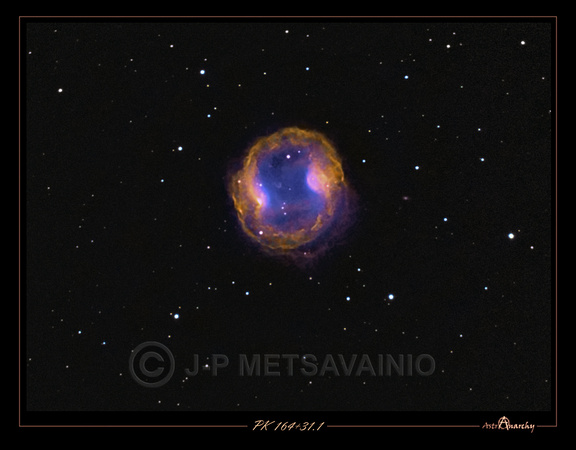Jones-Emberson 1
HST-palette
Beautifu, largish and very dim, planetary nebula.PK 164+31.1, sometimes known as a "Jones-Emberson 1" has an angular diameter of 6', 67" x 6', 67" and it locates in constellation Lynx. Distance from my home town Oulu, Finland, is about 1600 light years.
The tiny Blue central star is a white dwarf, the intense ultraviolet light emitted by this star makes elements in a ring glow. Ionized Hydrogen emits red light and the ionized Oxygen blue one.
Why the name "PK 164+31.1"?
PK comes from the names of Czechoslovakian astronomers Perek and Kouhutec. 1967 they created an extensive catalog of all of the known planetary nebulae in 1964. The number indicates the position in the sky. The alternative name "Jones-Emberson 1" is after its discoveres.
Processing work flow:
Image acquisition, MaxiDL v5.07.
Stacked and calibrated in CCDStack.
Deconvolution with a CCDSharp, 30 iterations.
Levels, curves and color combine in PS CS3.
Telescope, Meade LX200 GPS 12" @ f5
Camera, QHY9
Guiding, SXV-AO @ 9Hz
Image Scale, 1,5 arcseconds/pixel
Exposures
H-alpha 32x1200s, binned 2x2 and 7x1200s, binned 3x3 = 13h
O-III 2x600s, binned 4x4 and 1x1200s, binned 4x4
S-II 3x600s, binned 4x4 and 1x1200s, binned 4x4


